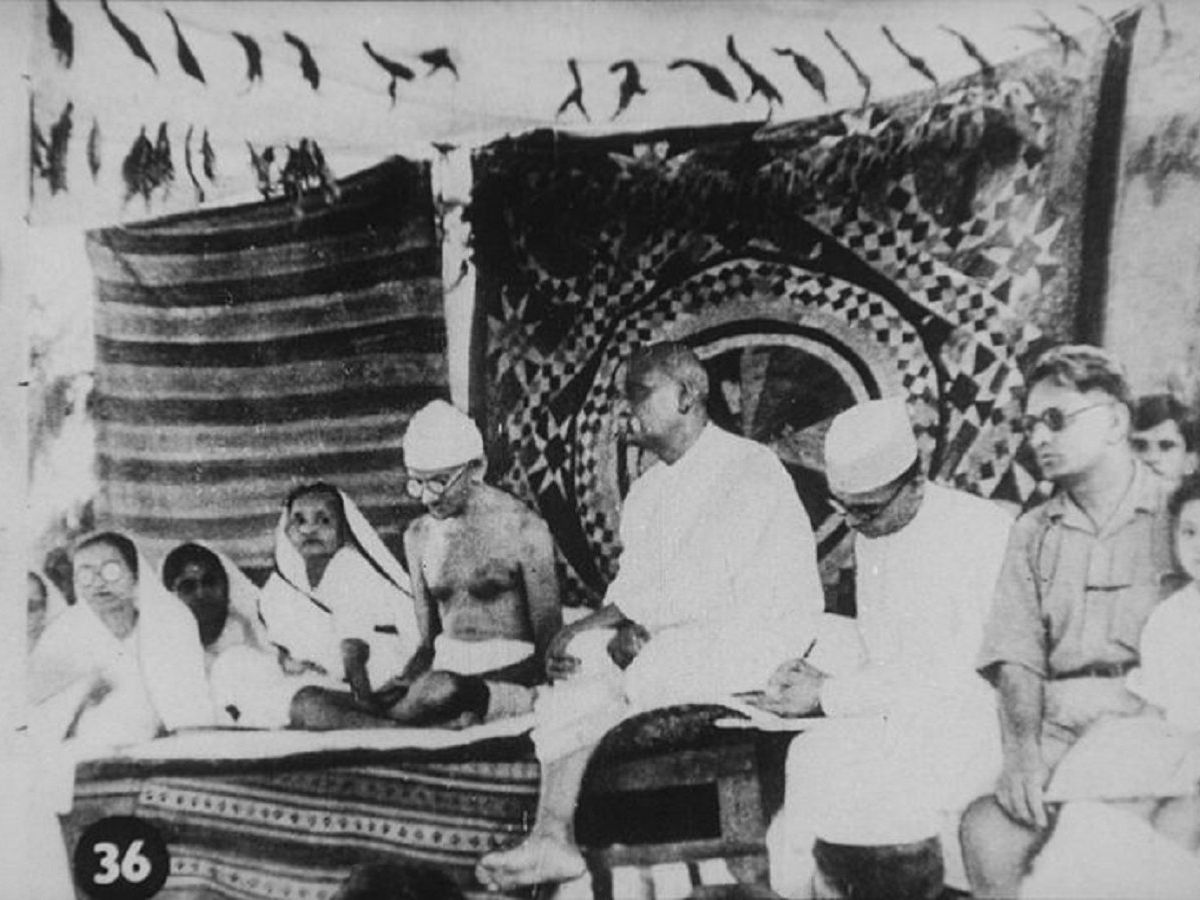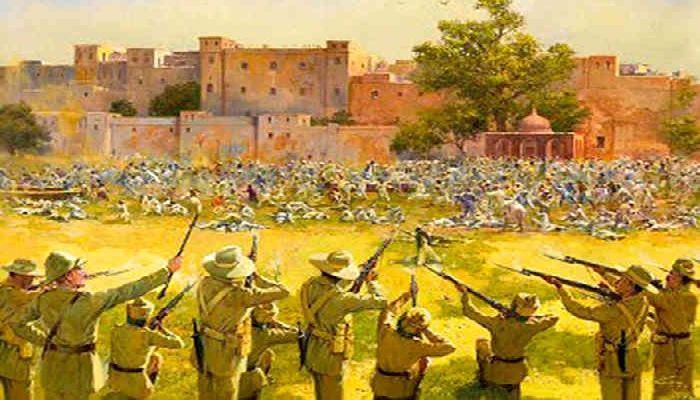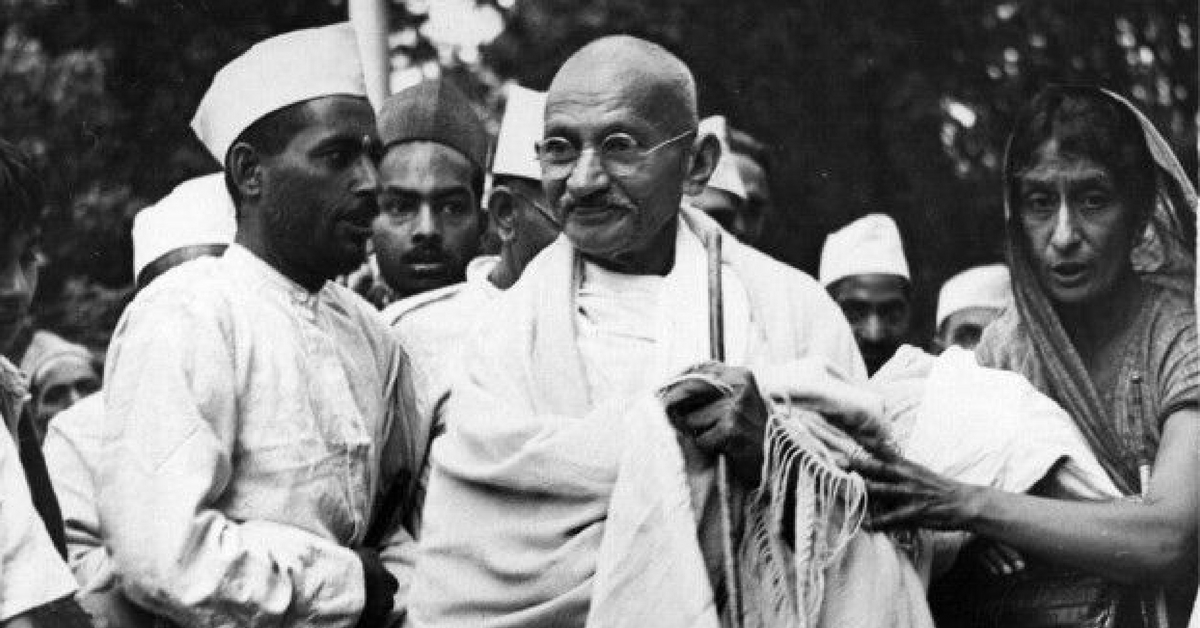The nationalist movement in Manipur is divided into three main phases. The early phase of nationalism lasted between 1885-1905. The first period started with the formation of the Indian National Congress and continued till its split in 1905. The second phase of nationalist politics was dominated by more resurgent politics. The second phase is also known as the extremist phase (1905-1918). The third phase began with the arrival of M.K. Gandhi in national politics. The third phase lasted between 1919-1947.
Each phase of nationalist politics was represented by distinctive methods and strategies. Gandhian phase saw a tactful combination of civil disobedience, non-cooperation, and spiritual values. Gandhian nationalism reinvented the methods of engaging colonial government. Gandhian method redefined nationalist churning in a non-violent manner. The gandhian phase of nationalism in India was not merely about transposing the anti-colonial struggle into a non-violent phase. It was also a phase that witnessed the tougher assertion of Hindu and Muslim nationalism.
Rise of Lower Caste Politics: Challenge to Gandhian Nationalism
The rise of the lower caste politics was another reality that questioned dominant nationalist narratives in India. Gandhian nationalism discovered new idioms of congregating an idea of India that was to appear more neutral and acceptable to the larger audience of the colonized. Therefore, there was a strategic combination of political objectives and morality. A combination of morality and politics was expected to create a deeper sense of Swadeshi and collective belongingness in India. The third phase of nationalism exemplified by the Gandhian method ultimately made Gandhi – the father of the nation.
Some Distinctive Pillars of Gandhian Method
Gandhian method of nationalism was founded on the spiritual strength of self in India. Gandhi was immensely influenced by the Bhagavad Gita, Buddhism, Gopal Krishna Gokhale, John Ruskin, and Leo Tolstoy. The Kingdom of God is Within You (1894) by Tolstoy and Unto This Last (1860) by John Ruskin had special effects on Gandhian methods and understanding of society and politics. Gandhian method of recovering the human self to elevate herself to a higher being was possible only when one was ready to abandon the path of violence and materialism. He prescribed the colonized Indians to rise above the foreign values and its materialistic civilizational values.
In other words, Gandhi was involved in a process of engineering an alternative citizenry in India to critique western civilizational dominance. According to Gandhi, decolonization was about the spiritual and moral liberation of Indians from the alien values and their apparatuses. Following are the key principles of the Gandhian method of politics.
Truth and Satyagraha
Truth is equivalent to Godliness. Right action is to be based on love and non-violence. Truth is not merely about the absence of violence but also about the right conduct. His method of true political conduct was to be based on ahimsa – non-violence. Truth and spiritual conduct of life was a cardinal foundation for elevating the human self to supreme existential values. For him, truth and godliness are to be treated as a corollary and interconnected. According to Gandhi, satyagraha was a true path and soul force to lead Indians to Swaraj.

The cardinal principle was to hate the evil, not the doer. The idea of true path was a method not limited to fighting foreign rule in India but also to defeating tyrannical systems around the world. Satyagraha is to determine the core of political action in India. It was the soul force that could lead to the right path – Satyagraha. The quest for justice, liberation, and independence was to be incomplete in the absence of purity of the human soul. Gandhi’s notion of Satyagraha was based on the teachings of Upanishads, Jainism, and the writings of John Ruskin.
Swaraj
Way back in 1909, Gandhi wrote Hind Swaraj responding to foreign administration, capitalism, and Western materialism. In the book, he notably argued that ‘the English have not taken India; we have given it to them’. The gandhian method evolved as a response to the existing forms of nationalist conceptions in India and colonial continuity in India. Gandhi’s idea of Swaraj consists of his vision of self–rule, and freedom in India. Gandhian nationalism reflected a political economy response to alien rule and its values.
Indians were advised to follow the principles of Swaraj. Swaraj as a political objective was to be founded on cardinal values of peace, love, and truth. According to Gandhi, Swaraj was not only a state of political freedom but also to be exemplified by actual salvation – Moksha. Gandhi’s conception of Swaraj is integrally based on Swadeshi – meaning political and economic self-reliance. As a part of his conception of Swadeshi – foreign cloths were boycotted, and a constructive program of indigenous spinning was encouraged by Gandhi.
Sarvodaya
The political vision of Gandhi is unique for his idea of Sarvodaya. The concept was inspired by John Ruskin. It, however, had an Indian basis. The concept of welfare was not alien to Indian traditions. The concept of Sarvodaya extensively influenced the nationalist constitutional debate in India.
The provisions as enshrined in Part IV of independent India’s constitution were largely reflective of the welfare concerns of Gandhi. Sarvodaya aims at upliftment and progress of all. To realize Sarvodaya, Gandhi coined the concept of Trusteeship were there was to be socio-economic cooperation between the wealthy and poor. The wealthy class was to voluntarily support the poor and needy in an amicable manner.
The Rise of Gandhian Response
M.K. Gandhi’s involvement in colonial critique began much before his return to India. He had spent his prime time of life in South Africa taking up the cause of racial and economically exploited South Africans and Indians. He vehemently opposed British laws in South Africa that placed stringent restrictions on Indian traders. His return to India in 1914 was a critical phase of colonial India. On one hand, the colonial administration produced several legislations that fragmented Indian society into communal blocs.
On the other hand, the Indian National Congress was divided into moderates, extremists, and Muslim blocs. The arrival of Gandhi marked a new narration of widening nationalist politics in India which was previously limited to upper caste and Western-educated elites. Gandhi remolded nationalist politics as he called upon the peasants, workers, and women to become part of the nationalist struggle.
Within a few years after his arrival, Gandhi encountered critical political developments in India. The Montagu-Chelmsford Reforms Act, 1919, ran short of self-rule in India. The extension separate electorate system to Sikhs, Anglo-Indians, and Europeans did not go well with the Indian National Congress. The Rowlett Act, 1919, which permitted the colonial authority to try legal cases without juries and internment of accused without trial was vehemently opposed by Gandhi. The purpose of the Act was to repress the nationalist struggle in India. Gandhi termed the Act as a ‘Black Law’.

The year 1919 was another blow to Indians. The Jalliangwalla Bagh Massacre of April 1919 killed hundreds of civilians. These incidents sealed Gandhi’s participation in the national movement in India. Mahatma Gandhi immediately launched Satyagraha and the non-cooperation movement. Gandhi termed the post-Jallianwalla violent protests as a ‘Himalayan blunder’. Rabindranath Tagore renounced his Knighthood as a mark of protest against the Jallianwala Bagh massacre. Gandhi’s significance grew as he began to engage in communal relations in India. Gandhi attempted to bring in the Hindus and Muslims closer.
Gandhi supported the Khilafat movement (1919-24) of the Indian Muslims to restore the authority of the Ottoman Sultan as the Caliph of Islam. The political scenario in India was ripe for Gandhi to experiment with his new tools of the nationalist struggle. Gandhi extended his solidarity to peasant struggles in India. He joined the Champaran Satyagraha of 1917 in Bihar where European planters forced farmers to grow indigo. As a result, the British Indian government was compelled to enact the Champaran Agrarian Act, of 1918 to free tenets from the atrocities of the planters. Gandhi also joined the Kheda Satyagraha in Gujarat against 23% increased taxation on agriculture.
Gandhi also supported the mill workers’ movement with his first unto death hunger strike in Ahmedabad when the mill owners decided to stop providing plague bonus to the workers in 1918. Gandhi’s non-violent commitment was so entrenched that he suspended the civil disobedience movement after violence erupted in Chauri Chaura.

The eventful days of the second decade of the 20th century converted Gandhi into a pivot of nationalism in India. He successfully introduced new methods of consolidating Indian masses through non-cooperation movement with a strict adherence to non-violence.
The Gandhian phase of nationalism saw the advancement in Indian National Congress’s political objective. In Lahore session 1929, under the guidance of Gandhi, it demanded Poorna Swaraj – ‘complete freedom from the British’. In the words of Bipan Chandra, methodologically Gandhian phase was marked by several phases of struggle and truce. It relied on methods of engagement, compromise, and constitutional negotiations.
The Gandhian method was to transform the Indian self and society. He advocated for practical idealism. Though he had faced a political adversary like Dr. Ambedkar, he successfully weakened the grip of British rule in India. The Gandhi Irwin Pact, 1931 saved India from the further division on communal lines. Gandhi’s leadership continued unabated till India achieved its independence.
The Quit India movement, 1942 was almost a final blow to British rule in India. Gandhi turned out to be an undisputed saint and leader of the nationalist movement in India. However, Marxist historians like R.C. Dutt, Sumit Sarkar, and subaltern scholar Sahid Amin have been critical of Gandhi’s abrupt withdrawal of civil movement after the Chauri Chaura incident as they called it a bourgeois derecognition of peasants’ resistance in India. Without a doubt, one cannot deny that the Gandhian method of nationalism tactfully converted India’s freedom movement into mass politics.

